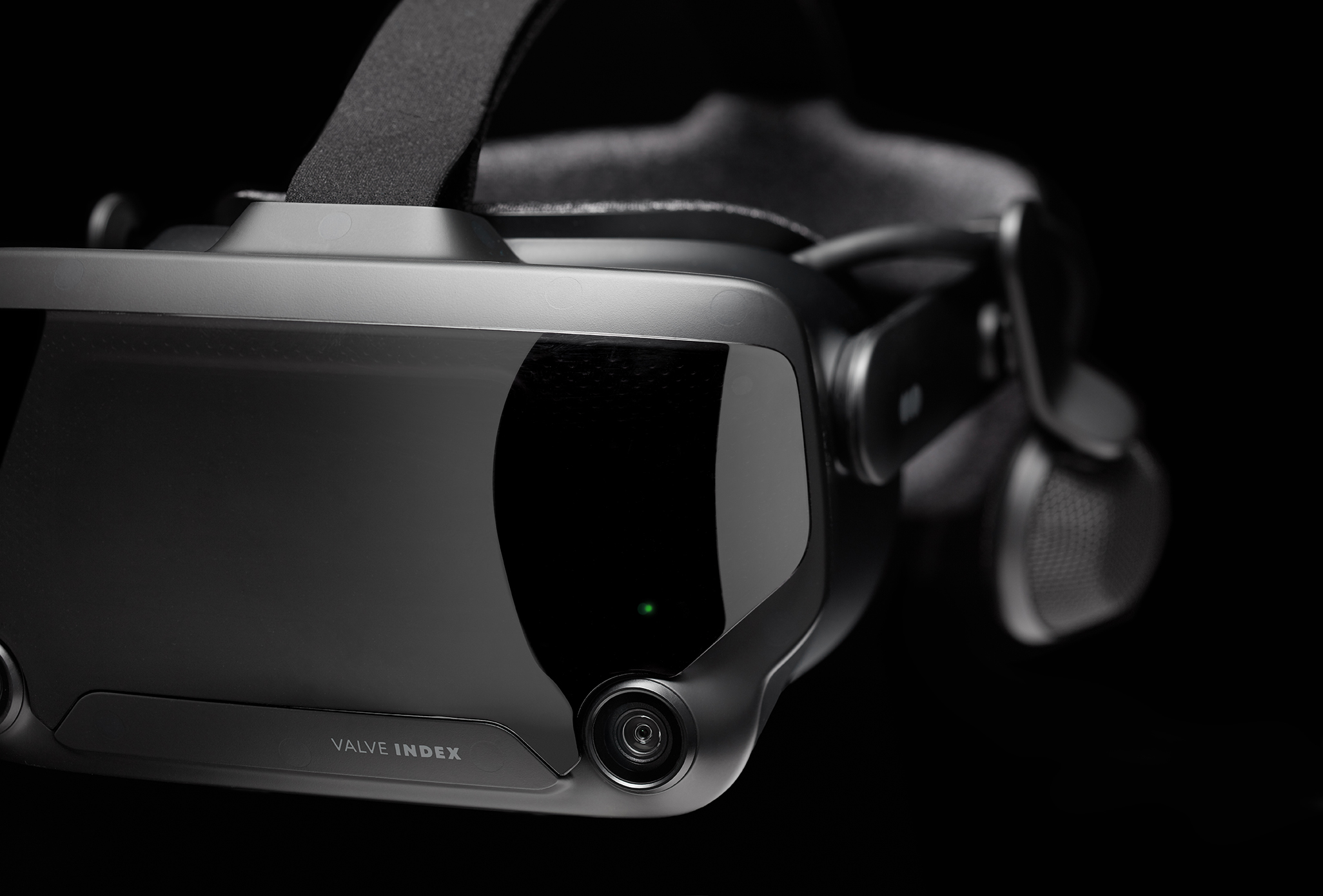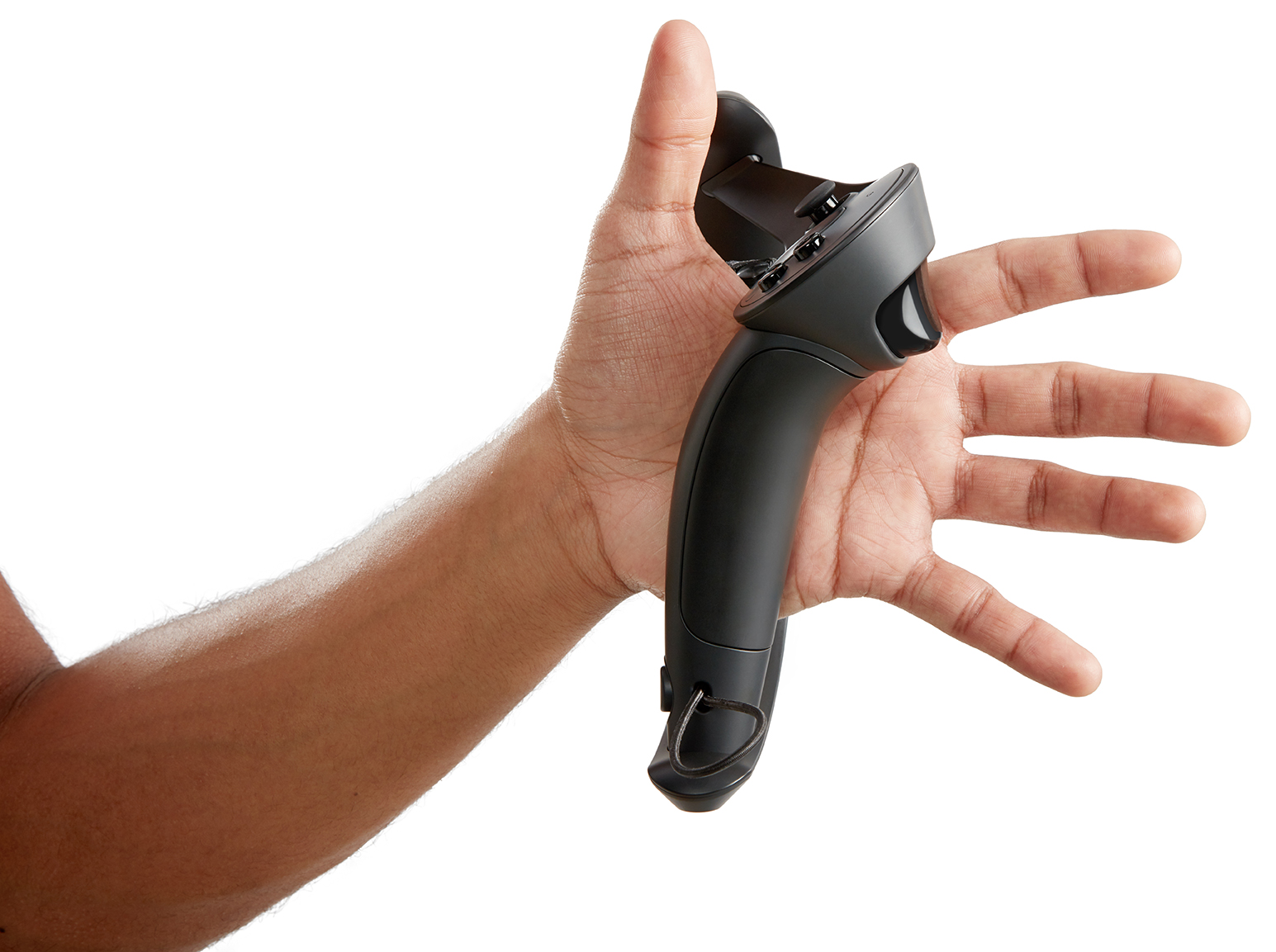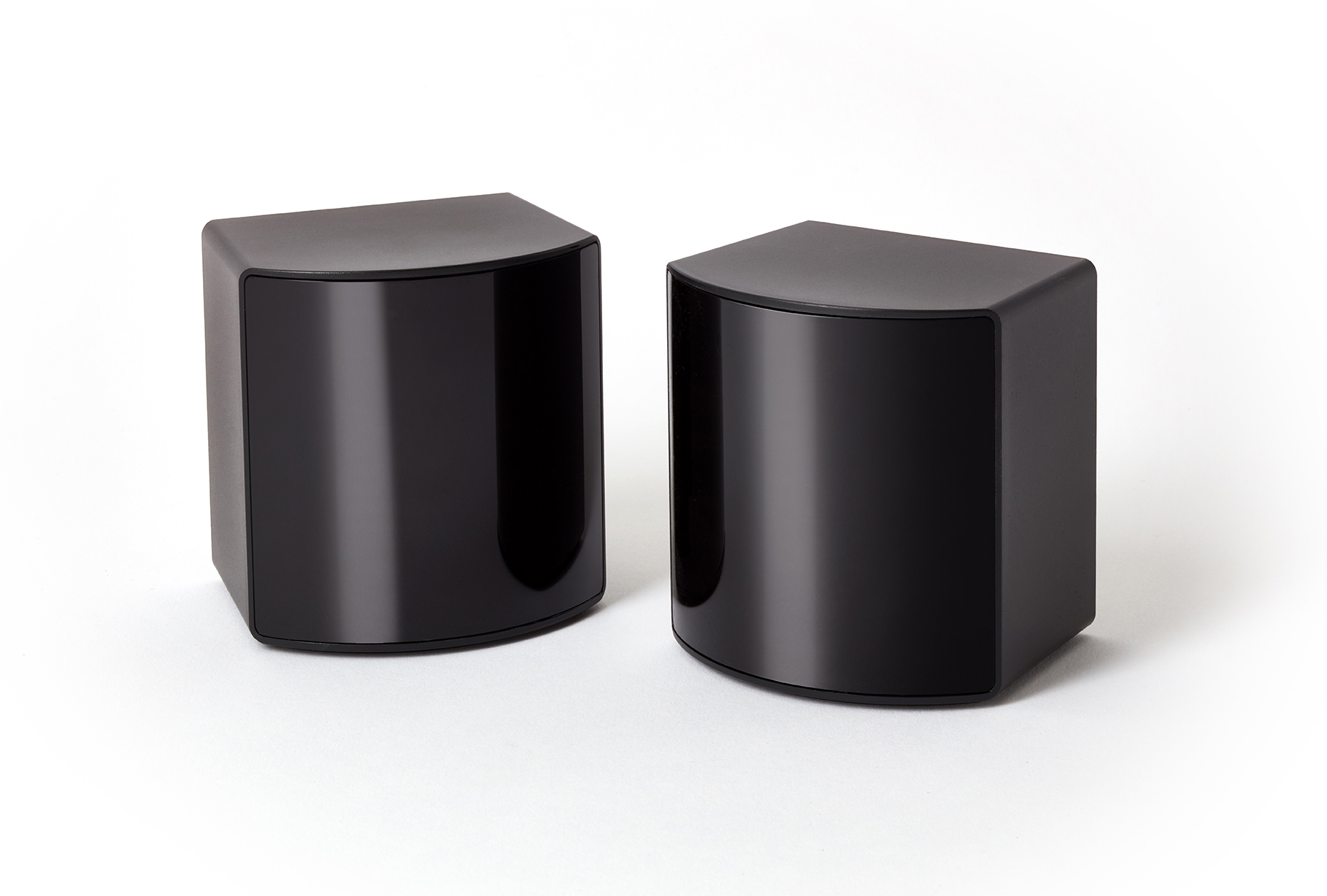Valve Index is in a class by itself.
This is true in at least three respects:
1.) Fine adjustments to the HMD’s optics and field of view take clarity and visual comfort to levels never seen before.
2.) Basic hand signals as well as grasping and release sensations enabled by wearable hand controllers are unique to Index right now.
3.) SteamVR Tracking is now the only significant consumer-focused movement tracking system working from the outside-in on PCs.
Let’s go through those one at a time.
Fine Optical Adjustments
Oculus Quest cut the cord to enable more movement freedom in VR. Index keeps the cord while refining everything that makes high-end VR so compelling. In particular, Valve’s biggest revelation with Index is its clarity and visual comfort that is unmatched by other consumer VR headsets.
Check out a full breakdown of the Valve Index specifications here.
In an original Rift or Vive, for example, you learn to point your head directly at people, objects or text. The edges of those earlier lenses catch so much light and have so many fresnel rings that if you point your eyes at something near the lens’ edge you notice the rings and light rather than the scene beyond. Index changes things. Combined with powerful, startlingly loud, off-ear speakers, I’ll call the Valve Index HMD a no-brainer upgrade from the original Vive in every respect for $500. The screen door effect — the sense that the grid pattern of the pixels is so visible that you are seeing the simulated world through a screen door — is no longer a term that makes sense.
I’ll note the LCD display’s black levels appear as shades of gray in darkened caves or tunnels. That might be a deal-breaker for some but I still prefer the Index visuals overall to those provided by any other headset I’ve tried. The lenses still catch god rays, too, but they seem reduced compared to 2016 headsets and generally disappear in bright scenes.
New PC VR buyers
For new buyers trying PC VR the $1,000 full Index VR Kit (controllers, tracking base stations and HMD) sits at the top of the field versus Rift S at $400.
After living with both Rift S and Index at my fingertips for the last month — as well as HP Reverb — I can say I’ve enjoyed my time with Index more than the others. Of course, I said as much weeks ago. What you’ve probably come here for then is an answer to the question of whether Index is $600 better than Rift S (and Oculus Quest)?
Most people will be satisfied with a Rift S that has easy setup and a nice fit. Still, the extra $600 is going to be worth it for a segment of buyers. The value of the new Index controllers and the interactions it enables remains an unknown at launch, which further complicates my answer.
New Controllers Mean More Verbs
The Index controllers do for 2019 what SteamVR Tracking did for the Vive in 2016 — they offer a fledgling new market for developers to explore and experiment in partnership with early adopting buyers. In April 2016 it was room-scale freedom of movement and hand controllers with rudimentary grip buttons. In 2019, Valve is unleashing a new wave of PC-based experimentation centered around the Index controllers.
Grasping, releasing, throwing, shaking hands, throwing a peace sign or flipping a bird — these verbs take on new, more natural and intuitive meanings with the Index controllers. The hand controllers exist in a space between the open air interfaces of Leap Motion and HoloLens and the haptically-enhanced approach of hand controllers and gloves. It is interesting, new and developers are still figuring out how best to implement these new verbs.
While Vive-compatible apps generally work on Index fine, and there are community-generated bindings available, this is no match for developer support of the controllers. There is a range of implementations and developers continue to update compatibility. Gripping the edges of a ledge with your fingertips in Blade & Sorcery is something incredible the developer rolled out just this week, for instance, while the impressive tech demo Aperture Hand Lab is forced into a backward compatibility mode for Oculus Touch controllers because its incredible handshake scene would essentially be broken without it. H3VR doesn’t represent hands at all, for example, while Vacation Simulator gives you nice fluffy fingers with which to throw around virtual objects.
With the Index controllers the journey in VR begins with your hands resting at your sides — fingers open and not gripping anything. There’s the constant reminder of the strap tightly looping on either side of your knuckles, but once you’re wearing the controllers it flips the current interaction paradigm of VR on its head. Your interaction with a virtual world doesn’t have to begin by actively gripping a controller.
This is a new path for VR input available to developers meant to build on the best of the controllers that came before it. We have yet to see broad support for these Index controllers, though, or a must-have application at launch that defines its new interaction paradigm. Is it worth $279? That’s a value proposition that’s changing with each new developer supporting the controllers.
Is SteamVR Tracking A Tax Or Freedom?
The short history of PC VR since 2016 is that, in April 2016, Valve’s ”lighthouse” tracking technology shipped with the HTC Vive headset and its controllers. This elegant and innovative system depends on non-visible lasers spinning like lighthouses from opposing corners of the room to pinpoint the position of a headset and its controllers. Facebook shipped Oculus Rift at practically the same time in 2016 with a non-tracked gamepad and mostly seated gameplay while supplying some developers with early tracked Touch controllers. Only in December of that year did Facebook finally ship those controllers and it took until April of 2017 for the company to fully support 3-sensor 360-degree setups — essentially matching the feature set Vive supported out of the box a year earlier.
These systems had one big difference though — each additional Oculus sensor required an extra USB port on the PC. The original SteamVR Tracking used one or two stations which only needed to be plugged into power to track objects. Valve Index 2.0 base stations sell for $150 each and it is essential you have at least two. This system, though, is expandable up to four base stations “creating a larger play area while reducing occlusion.” We have yet to test this expanded scenario, but I set up a pair of 2.0 base stations quickly and at a further distance from one another than the first generation and then mostly forgot about them.
Conclusion: Steam Libraries Have A New Pro Setup
Oculus Rift S essentially erases the cost and setup of external tracking hardware by mounting five cameras on the latest PC-powered headset made by Lenovo. We’ve had several requests to try Echo Arena in Revive, for instance, and we haven’t had a chance to try it yet. As I drafted this review Rift S received a tracking update in its public test channel too. This means that comparing the quality — and value of these tracking systems — is going to be an ongoing task for us.
The difference in price between Rift S and Index is vast, but so is the experience. I’ll have to end this, then, by turning the $600 question around on you — how much time are you going to spend in VR and how important is it to you that time be spent in a headset offering the most comfort and highest fidelity available in 2019?































